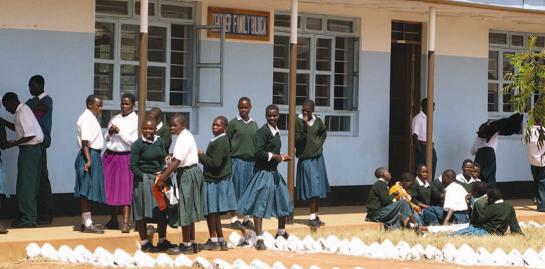 |
| Martha Stortz: top row, second from right |
“The mountain can’t be conquered by climbing or captured in words. Better Job’s response, after YHWH speaks to him from the whirlwind”:
Therefore I have uttered what I did not understand,
Things too wonderful for me, which I did not know …
I had heard of you by the hearing of the ear,
But now my eye sees you …— Job 42:3-5
This is what Martha (Marty) Stortz says about her climb to the summit of Mt. Kilimanjaro, or the Shining Mountain — the tallest mountain in Africa. Stortz, GTU Core Doctoral Faculty and Professor of Historical Theology and Ethics at Pacific Lutheran Theological Seminary, climbed the 19,340-foot mountain last July accompanied by six other adventurers — including her colleague Lisa Fullam, assistant professor of Moral Theology at the Jesuit School of Theology at Berkeley, and a team of porters, cooks, and guides.

It was a “watershed” experience. “Grief takes your breath away, and I needed to be back in my body again,” Stortz says of the trip that came three years after she lost her husband to brain cancer.
She and Fullam prepared for the climb by outfitting themselves with the right gear and hiking the peaks and valleys of the East Bay neighborhoods and regional parks, their backpacks filled with modern and ancient language dictionaries.
On Kilimanjaro, Stortz saw “a dense and magical rainforest…heathery moorland…alpine desert…moon-like arctic reaches of the summit…plants that had adapted to equatorial climes and extreme temperatures…ravens that could cruise thin air at 16,000 feet…a field of lava shards that looked like broken pottery from a giant’s kitchen…shields commemorating climbers who had died near the summit.
“The academy often does not yield much in the way of tangible results, but on Kilimanjaro, you can see and taste and touch and feel how high you are,” she says.
Stortz speaks eloquently not only about the physical dimension of the climb, but its spiritual dimension. The mountain was a great equalizer: “We were all bodies in need of food and water, encouragement and rest…and we also knew how much we depended on each other.” She says the mountain taught her three things: “…how to walk, no matter how slowly so that I could keep moving forward at a steady pace without stopping and starting all the time…how to breathe, no matter how shallow, so that I could keep a rhythm and not be gasping for air…how to pack what I need for each day and leave everything else in the tent…not bad lessons for life at sea level — or wherever it finds you.”
| Students at Magulilwa Secondary School • www.maguschool.org |
 |
“…how priceless education is…how hard people work for it.”
—Martha Stortz, GTU Core Doctoral faculty
There is a delightful twist to the end of this story. Once off the mountain, Stortz visited a small village secondary school started by a Tanzanian friend named Evaristo Sanga, one of the climbers, who, unfortunately, had to descend the mountain due to altitude sickness on the third day of the trek. Stortz and Fullam brought funds to the school for a year’s tuition for two girls. In a concrete building with no electricity or windows at the end of a red dirt road, Stortz asked the students, all in pressed green uniforms, “Who are you?” and “What do you want to be?” One by one the students stood up, their answers came like rapid fire: I want to be a doctor…a nurse…a pilot…a teacher…a preacher…a cook. Later, as Stortz and Fullam walked back down the red dirt road, “we saw this cloud moving toward us, like the approach of a great low-flying bird. In the middle of it was a green uniform worn by one of the older girls. She stopped in front of us, and the first words out of her mouth were: ‘My name is Apollonia. I want to be the president of Tanzania.’”
Stortz describes the mountain as “epiphanic” and the school at the end of the red dirt road as “transformative.” How will she use her experiences on Kilimanjaro and in the village school in her teaching? She says, “I tell students they need to travel in a third world country. And I remind them how priceless education is and how hard people work for it.”
Portions of this article are excerpted from Martha Stortz’s Climbing Kilimanjaro, which can be read in its entirety on her Web page. Visit for additional photos.
Martha Stortz and Lisa Fullam are recipients of a 2009-2010 Lilly Collaborative Research Grant, “The Progress of Pilgrimage.”
Their thesis is that cross-cultural experiences, service learning projects, and immersions are the post-modern version of the ancient practice of pilgrimage. They hope to hike part of Spain’s Camino de Santiago de Compostela, participate in Santa Clara University’s immersion program in El Salvador, and be faculty resource persons for the Evangelical Lutheran Church in America cross-cultural program in Mexico City.
